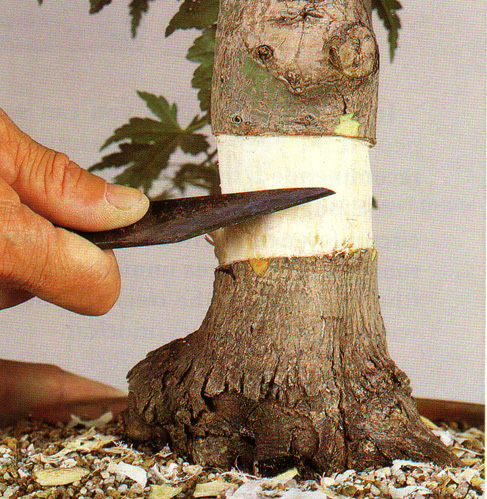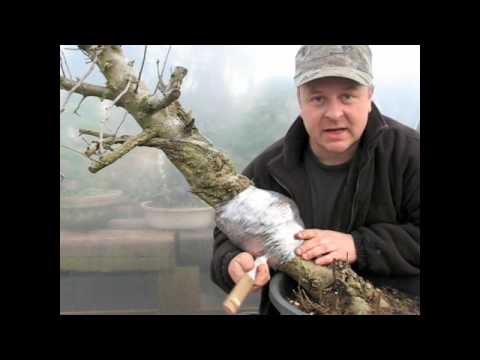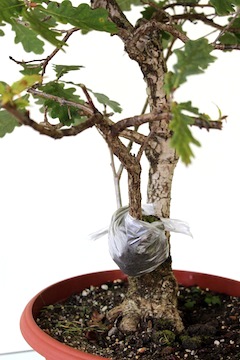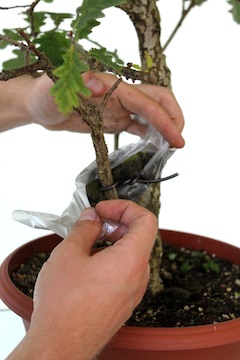Imagine transforming your ordinary bonsai tree into a visually stunning masterpiece with Air Layering Techniques. This age-old method allows you to create new roots on the trunk of your bonsai, resulting in a healthier and more attractive tree.
Whether you’re looking to air layer a Japanese maple, juniper, or any other type of tree for your bonsai collection, this technique will give you the ability to enhance the overall aesthetic and design of your miniature masterpiece. Join the ranks of bonsai enthusiasts who have successfully utilized air layering to create breathtaking bonsai trees.
What is Air Layering?
Definition of Air Layering
Air layering is a propagation technique used in bonsai cultivation, where a branch or stem of a plant is encouraged to produce roots while still attached to the parent plant. It involves creating a small incision in the branch, applying rooting hormone, and providing the necessary conditions for root development. This method allows bonsai enthusiasts to create new plants with desirable characteristics and quickly establish a root system for future bonsai cultivation.
Purpose of Air Layering
The main objective of air layering in bonsai is to create a new plant while maintaining the desired characteristics of the parent plant. It is often used to propagate plants that are difficult to root from cuttings or those with unique features that are worth preserving. By creating a separate root system for the air-layered branch, bonsai artists can eventually remove it from the parent plant and cultivate it as an independent bonsai tree.
Benefits of Air Layering for Bonsai
Air layering offers several advantages for bonsai enthusiasts. Firstly, it provides a reliable method for propagating plants that do not readily root from cuttings, expanding the options for bonsai cultivators. Additionally, air layering allows for the creation of new bonsai trees that maintain the characteristics of the parent plant, such as unique trunk shapes, branching patterns, or foliage. This technique also speeds up the establishment of a root system, reducing the time needed to develop a mature bonsai tree.
Choosing the Right Plant for Air Layering
Types of Plants Suitable for Air Layering
While air layering can be applied to a wide range of plant species, certain plants are more conducive to this propagation technique. Generally, plants that have flexible branches and the ability to grow roots easily are ideal candidates for air layering. Common choices include Japanese maple, juniper, pine, and ficus bonsai trees. Understanding the specific requirements and characteristics of different plant species is important when selecting the right plant for air layering.
Considerations for Bonsai
When selecting a plant for air layering specifically for bonsai purposes, there are additional factors to consider. It is crucial to choose a tree species that is suitable for bonsai cultivation, such as those with small leaves, interesting bark, or a compact growth habit. Additionally, the desired shape and style of the bonsai should be taken into account. Opting for a plant with a branch that possesses the desired characteristics for future bonsai development will help achieve the desired aesthetic outcome.
Popular Choices for Bonsai Air Layering
Some popular choices for air layering in bonsai include Japanese maple, juniper, pine, and ficus trees. Japanese maple (Acer palmatum) is valued for its vibrant autumn foliage and delicate branching patterns, making it a popular choice among bonsai enthusiasts. Juniper (Juniperus) trees are known for their unique needle foliage and are often used for creating dramatic and rugged bonsai styles. Pine (Pinus) species are valued for their resinous bark and can be trained into elegant bonsai shapes. Ficus (Ficus spp.) offers a wide variety of species suitable for bonsai, with their characteristic aerial roots and glossy foliage.
Preparing the Plant for Air Layering
Timing
Choosing the right time of year to perform air layering is crucial for success. In general, the ideal time is during the active growth season when the plant is producing new shoots and has a high metabolic activity. For most tree species, this is typically in the spring or early summer, when temperatures are mild and plants are actively growing. It is essential to research and understand the specific timing requirements of the plant species you are working with.
Tools and Materials Needed
Before beginning the air layering process, gather the necessary tools and materials. These may include sharp pruning shears or a small saw for branch removal, a knife or grafting tool for making the ring cut, rooting hormone powder or gel, plastic wrap or a sphagnum moss ball, and a secure tie or twine. Having these items readily available will ensure a smooth and efficient air layering process.
Pruning and Preparation Techniques
Prior to initiating air layering, it is important to prepare the plant by pruning and removing any unwanted branches or foliage. This allows for better light penetration and airflow, increasing the chances of successful root development. Additionally, removing any excess foliage can help reduce stress on the tree and redirect energy to the air-layered branch. Carefully assess the plant’s structure and prune accordingly, taking into consideration the desired bonsai style.
Simple Air Layering Technique
Step 1: Selection of Branch
Begin by selecting a suitable branch for air layering. Look for a healthy branch with the desired characteristics for future bonsai development. It is important to consider the size, shape, and position of the branch, as it will ultimately determine the aesthetic outcome of the bonsai tree. Make sure the branch is thick enough to support the development of a new root system.
Step 2: Making a Ring Cut
Using a sharp knife or grafting tool, make a clean and precise ring cut around the selected branch. The incision should penetrate through the bark and cambium layer, but avoid cutting into the hardwood. The size of the ring cut can vary depending on the thickness of the branch, but generally, a 1-2 inch gap is sufficient. Make sure to remove any excess bark or debris from the cut area.
Step 3: Application of Rooting Hormone
Once the ring cut is made, apply a rooting hormone powder or gel to the exposed cambium layer. Rooting hormone aids in stimulating root growth and increases the chances of successful air layering. Follow the instructions provided by the manufacturer for the correct application and dosage.
Step 4: Adding Moisture and Protection
To encourage root development, create a moist environment around the air-layered branch. This can be achieved by wrapping the ring cut area with damp sphagnum moss or using a plastic wrap to retain moisture. Make sure to secure the moss or plastic wrap in place using a tie or twine. This protective layer helps retain moisture, prevents dehydration, and provides a conducive environment for root formation.
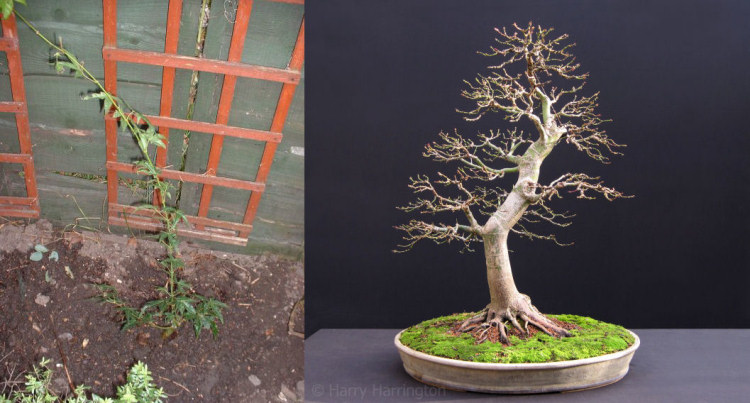
Advanced Air Layering Techniques
Tongue Approach Graft
The tongue approach graft technique is an advanced air layering method used when the selected branch is thin or difficult to create a ring cut on. Instead of making a ring cut, a small incision is made at an angle, and a small tongue-shaped wedge is created. This allows for better contact between the air-layered branch and the rooting medium, increasing the chances of successful root development.
Sphagnum Moss Technique
The sphagnum moss technique is an alternative to using plastic wrap for creating a moist environment around the air-layered branch. Sphagnum moss is soaked in water until thoroughly saturated and then wrapped around the ring cut area. The moss is secured using twine or plastic wrap. This method provides a high level of moisture retention and is particularly well-suited for plants that require consistently moist conditions during the air layering process.
Plastic Wrap Method
The plastic wrap method is a widely used technique for air layering, especially in warmer climates. After making the ring cut and applying rooting hormone, the cut area is wrapped tightly with plastic wrap, ensuring it is fully sealed. This creates a humid microclimate that accelerates root development. It is important to regularly check the moisture levels and adjust as needed to prevent excessive drying out or mold formation.
Girdling Technique
The girdling technique involves completely removing a section of bark and cambium layer in a circular manner to create an exposed area for root development. This method is typically used for thicker branches or trunks that require a more significant removal of tissue. It is important to plan the size and location of the girdled area carefully to ensure the survival of the air-layered branch.
Air Layering Specific Bonsai Species
Air Layering Japanese Maple Bonsai
Japanese maple bonsai (Acer palmatum) is a popular choice for air layering. This species exhibits stunning foliage color variations, intricate branching patterns, and a compact growth habit, making it highly sought after by bonsai enthusiasts. Air layering is a reliable method to propagate Japanese maples and preserve their desirable characteristics. The timing for air layering Japanese maple bonsai is typically in late spring or early summer.
Air Layering Juniper Bonsai
Juniper bonsai (Juniperus spp.) is another commonly air-layered species in bonsai cultivation. With their unique needle-like foliage and rugged, weathered bark, junipers offer a wide variety of options for creating different bonsai styles. Air layering helps establish a root system for juniper bonsai, enabling the creation of new trees with desirable characteristics. The best time for air layering juniper bonsai is during spring when growth is most active.
Air Layering Pine Bonsai
Pine bonsai (Pinus spp.) trees are valued for their resinous bark, distinctive growth patterns, and elegant shapes. Air layering is a reliable method for propagating pine bonsai and preserving the unique characteristics of the parent tree. Timing is crucial when air layering pine bonsai, as it is typically performed during early spring, just before the new growth begins. Careful consideration of branch selection and preparation is essential for successful air layering of pine bonsai.
Air Layering Ficus Bonsai
Ficus bonsai (Ficus spp.) are known for their aerial roots, glossy foliage, and adaptability to indoor environments. Air layering is an effective method for propagating ficus bonsai and maintaining their desirable features. The recommended time for air layering ficus bonsai is during the growing season in late spring or early summer. Proper care and maintenance during the air layering process are necessary to ensure successful root development.
Tips for Successful Air Layering
Maintaining Proper Moisture Levels
One of the most critical factors for successful air layering is maintaining the appropriate moisture levels. The air-layered branch should be kept consistently moist but not overly saturated. Regularly check the moisture levels by gently squeezing the moss or checking the moisture condensation inside the plastic wrap. Adjust the moisture levels accordingly to create a suitable environment for root development.
Choosing the Right Rooting Hormone
The selection of the right rooting hormone is crucial for air layering success. Research and choose a rooting hormone that is specifically formulated for promoting root growth in woody plants. Follow the instructions provided by the manufacturer for the correct dosage and application method. Applying an appropriate amount of rooting hormone increases the chances of successful root development.
Monitoring and Care during Root Development
During the root development phase, regular monitoring is essential to ensure the air-layered branch is progressing as expected. Check for signs of root growth by gently pulling on the moss or plastic wrap. If resistance is felt, it indicates that roots are forming. Avoid disturbing the air-layered branch unnecessarily, as this can disrupt root development. Provide proper care during this period, including regular watering and protection from extreme weather conditions.
Protecting the Air Layered Section
To ensure the success of air layering, it is important to protect the air-layered section from environmental factors that may impede root development. Protect the ring cut area from direct sunlight, extreme heat, or frost, as these conditions can inhibit the formation of roots. Additionally, ensure that the protective wrapping remains intact and well-secured to maintain moisture levels and safeguard the air-layered branch.
Timing and Patience
Air layering requires patience and timing. It is crucial to perform air layering during the appropriate season for each specific plant species. Rushing the process or removing the air-layered branch too early can lead to failure and root development issues. It is important to be patient and monitor the progress of the air-layered branch. Each plant species may have different timelines for successful root development, so allow sufficient time before considering transplanting.
Common Mistakes to Avoid
Improper Timing
Timing is critical in air layering. Performing the procedure outside the active growth season can significantly reduce the chances of success. Be sure to research and understand the specific timing requirements of the plant species you are working with. Performing air layering during the wrong season can lead to failed root development and the loss of the air-layered branch.
Insufficient Moisture
Maintaining adequate moisture levels is paramount in air layering. Failure to provide enough moisture can hinder root development and cause the air-layered branch to dry out. Regularly check the moisture levels and make any necessary adjustments to ensure the environment remains consistently moist. Proper moisture levels ensure the survival and healthy growth of the air-layered branch.
Incorrect Placement or Coverage
Proper placement and coverage of the air-layered section are crucial for successful root development. Inadequate protection from the elements, such as direct sunlight or extreme temperatures, can impede root formation. Ensure that the protective wrapping is securely in place and that the air-layered section is shielded from unfavorable conditions. Avoid exposing the air-layered branch to harmful environmental factors that can hinder root development.
Neglecting Pruning and Maintenance
Neglecting regular pruning and maintenance can hinder successful air layering. Overgrown foliage and crowded branches can restrict light and airflow, hampering root development. Prune the plant appropriately to allow sufficient light penetration and airflow to the air-layered branch. Additionally, provide proper care and maintenance, including watering, fertilizing, and protection from pests and diseases, to ensure the overall health and vitality of the plant during the air layering process.
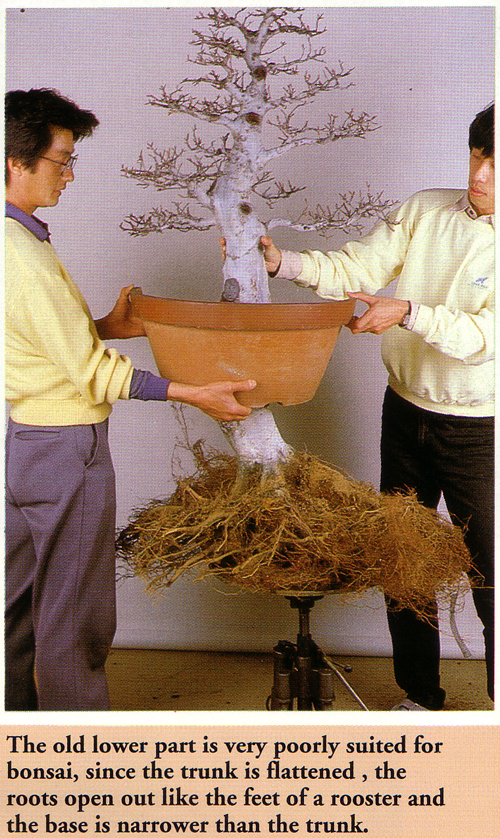
Aftercare and Transplanting
Monitoring Root Development
After the air-layered branch has been established and root development has occurred, regular monitoring is essential. Carefully observe the progress of the roots by periodically checking the moss or plastic wrap. Look for signs of healthy root growth, such as white, fibrous roots extending into the rooting medium. Monitor the moisture levels and adjust watering accordingly to provide optimal conditions for root development.
Determining Readiness for Transplanting
Before transplanting the air-layered branch, it is important to ensure that the roots are sufficiently developed and able to support the plant’s growth. Gently tug on the moss or plastic wrap to check for resistance. If there is strong resistance, it indicates that a significant root system has formed. Avoid transplanting too early, as immature root systems may be less likely to survive transplantation.
Transplanting Techniques
When transplanting the air-layered branch, carefully remove the protective wrapping and cut below the newly formed roots. Use sharp and sterile tools to minimize damage to the roots. Select an appropriately sized container or planting site that allows for continued root development and growth. Prepare the planting medium, ensuring it is well-draining and suitable for the specific plant species. Secure the air-layered branch in place and backfill the container or planting site, ensuring the roots are adequately covered.
Post-Transplant Care
After transplanting, provide appropriate care and maintenance to ensure the survival and future growth of the air-layered plant. Place the newly transplanted tree in a suitable location with the appropriate light conditions and protection from extreme weather. Water regularly and monitor the moisture levels, avoiding both overwatering and underwatering. Continue to provide proper care, including fertilizing, pruning, and protecting the tree from pests and diseases, to ensure its healthy development.
Summary
Air layering is a valuable propagation technique for bonsai enthusiasts. It offers a reliable method for propagating plants that are difficult to root from cuttings and preserves the desirable characteristics of the parent plant. By understanding the specific requirements of different plant species and following proper techniques, bonsai artists can successfully air layer and create new trees with unique features. With patience, timing, and appropriate care, air layering can be a rewarding process that leads to the development of beautiful and thriving bonsai trees.
